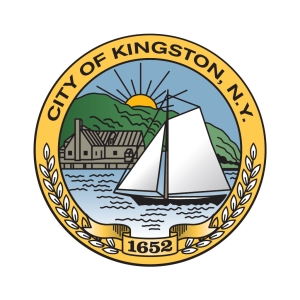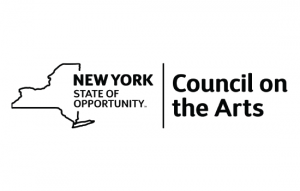Advocacy & Liaison Meeting Minutes 8/21/2015
Kingston/Art District
Advocacy & Liaison Meeting
Meeting: August 21, 2:30-4:00 pm (Friday)
R&F Handmade Paints
Attendees: Linda Marston-Reid, Arts Mid-Hudson; Jordan Scruggs, Assoc. Pastor & Director of Outreach at Saint James United Methodist; Gloria Waslyn, Parrots for Peace; Gregg Swanzey, Director of Economic Development & Strategic Partnerships, City of Kingston; Annette Jaret, artist; Marilynn Rowley, artist; Kitty McCullough, Historic Kingston Waterfront; Richard Frumess, R&F Handmade Paints.
Notes by Richard Frumess and Kitty McCullough
The purpose the Advocacy and Liaison committee is to recognize that the Arts District is not intended to be a self-contained group of artists, arts businesses, theaters, galleries, and organizations but a focusing mechanism for the revitalization of the Midtown as a whole and an advocate for unifying the arts and non-arts of the area with a common theme.
The question of how we will relate to constituent communities was a priority for many.
The committee felt that the greater success of the District lies in its outreach to
- the residential community and its organizations (Boys & Girls Club, YMCA, Hodge Center, and churches)
- non-arts businesses of Midtown
- the Arts Advisory Commission (including the clarification of what the AAC is supposed to be doing in relationship to the Arts District – too much confusion here)
- various educational institutions (Kingston HS, Center for Creative Education, SUNY Ulster )
- other arts and festival groups throughout the city (ASK, O+, Cinco de Mayo, Trans Art, Reher Center, media centers, film makers, visual and performing artists)
- non-profit agencies (RUPCO, Friends of Historic Kingston, Land Trust)
- commissions (Rail Trail, Landmarks, Heritage Area, Conservation Advisory, Arts Commission)
- government agencies – both city and county (Planning Bd., Zoning Bd., Mayor’s Office, Economic Development & Strategic Partnerships, Community Development
One reason why this outreach is important.
Kitty raised the question — what do the neighborhoods need that the arts/arts district can help address? Who would the partners be in learning this? In delivering what’s needed? Is this a good role for the Arts District? Would the Arts District reach out as well to artists and communities outside of the city and county, recruiting them to come here?
The question grows out of a major concern that was expressed many times during the meeting – how to avoid creating an Arts District whose ultimate function becomes a conduit for “gentrification?” On the one hand we talk about the need for investment of businesses in the commercial corridor and of the renovation of abandoned and dilapidated housing. On the other hand we fear that the economic engine that would accomplish this will ultimately displace rather than revitalize the existing community and ultimately too the artists who have contributed to the Arts District’s development.
The Arts District could put the emphasis more on the ways the Arts District can partner with other organizations, e.g., Center for Creative Education (CCE), RUPCO, and other Midtown groups mentioned above. The Arts District could function either as a clearing house for Midtown’s art needs and providers, or it could be more directly involved in ways like supporting the delivery of their programs, helping to document the need and raise the money for the artists, space, materials.
Jordan emphasized the need to reach out to the surrounding community and especially Midtown’s low-income, “underserved” youth. She works directly with Midtown residents and knows a lot about how to reach out to them and what their needs are. One of her suggestions was to identify artists who will start providing programs for low income youth.
Annette and Marilynn spoke about artists as also a “community” and that they also are “underserved” and what role the Arts District would play in determining “real estate in terms of suitable artist spaces”?
Should we try to help create new affordable studio and live/work opportunities for artists…should we help recruit developers who will do this….or should we try to develop buildings ourselves?
Richard said the question has been raised whether it is “putting the cart before the horse” to set the boundaries of the District before fully understanding its needs and roles, rather than letting it shape itself.
Annette talked about her impression that most arts districts began as a collection of galleries and coffee shops and grew from there. Kitty explained that we had assembled four teams totaling more than 20 people to research how arts districts around the country had begun and how they are working today, then assembled the findings into a powerpoint that is available online. One thing we learned was that there were a number of ways districts had their beginnings and any number of different purposes they serve today. The Midtown Arts District is moving toward a critical mass of artists, arts manufacturing businesses, maker’s market workrooms and artist live work spaces.
Kitty suggests that we need to have on hand a constantly updated description or document that summarizes our process to date and gives a broad picture of what we have learned and what we have accomplished, so that as we involve new people into shaping – or simply supporting – the Arts District, they are not starting at square one in understanding what has been done and what still lies ahead.
The proposed Common Council tour fits here. Council members will come with similar “headsets” – some more informed, some less so). Can we send them a short briefing document so that they come to us a little more prepared? Can we encourage a few key members to watch the PowerPoint with us and talk through their assumptions and questions so they can be peer informants?
Alderwoman Nina Dawson has already taken steps toward reactivating the Midtown Business Assoc. Richard suggested that relationship with all Midtown Businesses – not just arts-based businesses – is important and asked what kind of partnership could we have with the new business group?
How do we reach out?
- As mentioned earlier regarding the possibility of reaching out to artists and relocators from outside the area, what kind of recruitment will be undertaken? Ads? Press placements? Tour days? Tours during community events? A “tour bureau” with names of those willing to be available when there is someone visiting who could be recruited? Will we do it or just prepare the research and/or materials, or partner with someone who does?
- Should we form an ad hoc consortium (Arts Commission, ASK, Community Foundation) to determine what artists need and make recommendations about ways the Arts District could/should help?
State of the Arts in Kingston
Kitty felt that it would make sense to partner with the Arts Advisory Commission to create a “State of the Arts in Kingston” assessment that asked some of the questions above as well as adding new ones:
- What do artists need that the arts/arts district can help address? Who would the partners be in learning this? In delivering what’s needed? Is this a good role for the Arts District?
- What do arts & cultural heritage organizations need that arts/arts district can help address? Who would the partners be in learning this? In delivering what’s needed? Is this a good role for the Arts District?
- What does the public need that the arts/arts district can help address? Who would the partners be in learning this? In delivering what’s needed? Is this a good role for the Arts District?
- What do businesses need that the arts/arts district can help address? Who would the partners be in learning this? In delivering what’s needed? Is this a good role for the Arts District?
- What does Kingston’s “tourism industry” need that the arts/arts district can help address? Who would the partners be in learning this? In delivering what’s needed? Is this a good role for the Arts District?
- Would it be possible at some time to create a position for a paid, qualified arts and cultural heritage professional? It doesn’t have to be a City employee, it could be located in a non-profit.





